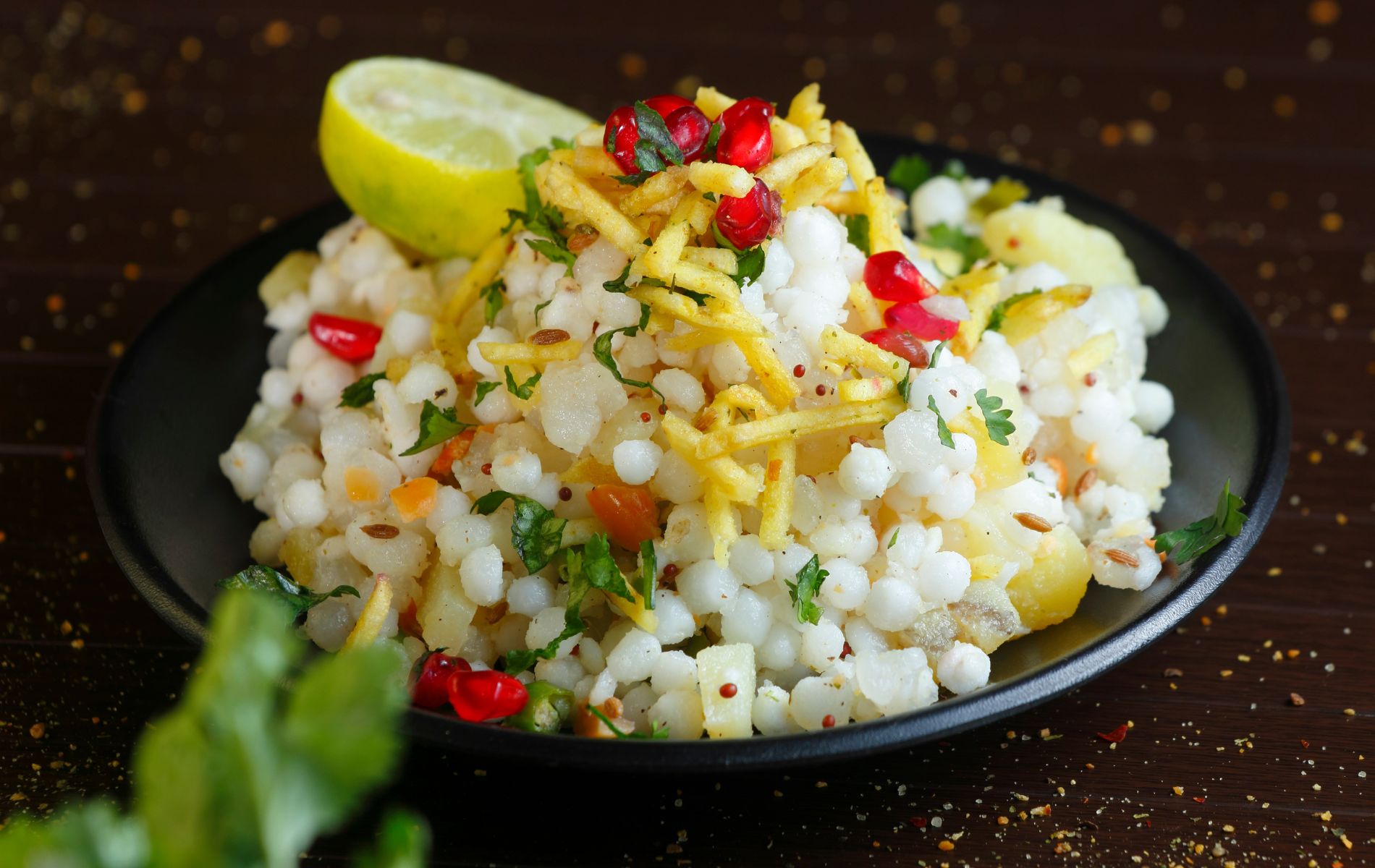Currently Empty: ₹0.00

Sabudana Khichdi vs Sabudana Vada: Which one is Healthier?
While referring to fasting food or light food, two names readily come to our minds and those are sabudana khichdi and sabudana vada. Both of them are well-known traditional foods relished particularly on fasting days, during festivals, and as snacks in the evening. However, when one considers healthy eating, most of us feel curious to know which one to prefer — sabudana khichdi or sabudana vada.
Sabudana is a common dish in Indian kitchens during fasting. Sabudana is high in carbohydrate content and is a source of instant energy. However, the preparation method for sabudana khichdi and sabudana vada is crucial in determining which one is better for your health.
Cooking Method Matters
One of the greatest contrasts between sabudana vada and sabudana khichdi is in the process of cooking. Sabudana khichdi is typically made using minimal oil or even ghee at times. It is a process of stir-frying sabudana pearls soaked in water with peanuts, cumin, green chilies, and boiled potatoes.
Conversely, sabudana vada is fried and prepared using soaked sabudana blended with mashed potatoes, peanuts, and spices. The vada takes the form of flat round patties and is fried into golden brown color. This indicates that sabudana khichdi contains much less oil than vada, and thus sabudana khichdi is a healthier option for those who want to control the fat content.
Calorie Comparison
When comparing the calorie content, sabudana khichdi is comparatively lower in calories compared to sabudana vada. Sabudana khichdi in a serving gives healthy energy without excess fat from deep frying. Sabudana vada being deep-fried contains added calories and fat that would be detrimental on a regular basis.
Individuals attempting to control their weight find sabudana khichdi more acceptable than vada since it fills them up without contributing excessive calories to their diet.
Nutritional Value
Sabudana khichdi contains more nutrients from foods such as peanuts, potatoes, and cumin seeds. Peanuts in sabudana khichdi contribute healthy fat and protein. Potatoes contribute to the fiber and energy content, thus making sabudana khichdi a balanced diet for fasting or light meals.
Sabudana vada employs the same ingredients but is deprived of certain nutrients when deep-fried. Deep-frying releases heat that can kill delicate vitamins, and sabudana khichdi is a bit healthier overall as a result.
Digestive Benefits
Another important advantage of sabudana khichdi is that it is less heavy on the stomach. It can be easily digested as it incorporates less oil and lesser cooking methods. For individuals with digestion or acidity issues, sabudana khichdi is suggested in comparison to vada.
Fried foods such as sabudana vada at times cause indigestion or bloating, particularly when taken during fasting when the stomach is empty for hours. Therefore, sabudana khichdi is a relatively safer choice for gut health.
Versatility of Ingredients
Sabudana khichdi is easily customizable. You can include vegetables such as carrots, beans, or green peas for extra nutrition. Some individuals even include grated coconut, lemon juice, and fresh coriander in their sabudana khichdi for extra flavor.
Sabudana vada, however, does not have much scope for customization because of the way it is prepared. Sabudana khichdi provides you with the freedom to make changes in ingredients according to taste and health requirements.
Appropriate for All Age Groups
Kids, adults, or elderly citizens, sabudana khichdi is appropriate for everyone. Its gentle texture and subtle spices make it appropriate even for those with dental problems or those in need of light food. Sabudana khichdi is also an ideal pre or post-workout meal because of its high energy level.
Sabudana vada, though flavorful, might not be suitable for young children or the elderly due to its crispy, hard texture and increased oil content.
Most Suitable for Everyday Consumption
Whereas sabudana vada is best had on an occasional basis, sabudana khichdi may be consumed on a regular or fasting diet more often. Individuals seeking energy at the expense of health tend to opt for sabudana khichdi as their first preference.
Sabudana vada is best saved for cheat days or special occasions when indulgence is on the agenda. Otherwise, sabudana khichdi is obviously the winner for everyday consumption.
Regulating Blood Sugar Levels
Sabudana is mostly starch, so moderation is essential for diabetic patients. But sabudana khichdi, with the inclusion of peanuts and minimal oil, regulates blood sugar levels better than sabudana vada.
The fact that sabudana vada is deep-fried can lead to a faster increase in blood sugar levels, while sabudana khichdi can provide energy by a gradual release, which makes it a good option for diabetics in moderate amounts.
Conclusion
Both sabudana khichdi and sabudana vada have their own place in Indian cuisine and festive celebrations. But when it comes to choosing a healthier meal, sabudana khichdi has many advantages. It is low in oil, easy to digest, customizable, and suitable for daily meals.
Individuals in search of a balanced, energy-rich, and light meal tend to like sabudana khichdi more than sabudana vada. Not only does it fulfill hunger, but it also helps to promote a healthier lifestyle. Having sabudana khichdi in your diet plan guarantees taste without remorse, hence it is an intelligent option for fasting days or regular consumption.





